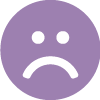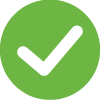You are viewing an old version of this page. View the current version.
Compare with Current View Page History
Version 1 Current »
https://help.myob.com/wiki/x/dMOyAQ
How satisfied are you with our online help?*
Just these help pages, not phone support or the product itself
Why did you give this rating?
Anything else you want to tell us about the help?
Reports can be viewed on the screen, printed to a printer or output to a file.
Follow the procedure to produce your report.
Click Print to open the Print dialog.
Click Preview and the report displays on the screen.
The toolbar provides a number of buttons as explained here:
Toolbar icon | Description |
|---|---|
| Print allows the report to be printed directly from the Print Preview window. |
| Copy copies the current page to the clipboard for pasting into any compatible application. |
| Edit Report opens a text editor that provides functions like cut, copy, delete, paste, find, replace and so on. |
INSERTIMAGE | External Edit opens Microsoft Word to change format and content. Exit from Word closes the Preview window. |
INSERTIMAGE | Select the view percentage to zoom in or out. Zoom in |
| Close closes the Preview window. |
(AE) | The PDF button allows you to save your report as a PDF. Refer to Printing Tax Returns to PDF Printing. If you have a customised Print Preview toolbar you must Reset it before you will see any new toolbar icon. Refer to How to Reset the Toolbar to the default setting. You must reapply customisation you still require. |
(AE) | The Share It icon is greyed out unless you have Document Manager (DM) installed for storing reports. Refer to Auto saving to Document Manager . If you have customised your Print Preview toolbar you must Reset it to see new toolbar icons. Refer to How to Reset the Toolbar to the default setting. You must reapply customisation you still require. |
MYOB PDF Manager (AE) | For details of MYOB PDF Manager read |
Back to Page Setups
(AE) Printing Tax Returns to PDF Printing
(AE) Auto saving to Document Manager
The Font Styles window allows you to associate True Type and built in printer fonts with font list entries. Each font list is specific to a nominated page setup. You can store up to fifteen different font and size combinations for each page setup.
To access the Font Styles tab:
From the Page setup window, highlight the page setup in the list.
Click Properties to open the Page setup properties window.
Click the Font styles tab.
INSERTIMAGE
The fields on the Fonts tab are:
ID: The IDs assist you to organise the font styles. The menu provides cut, copy, paste, insert, delete and clear.
Title: The Title column descriptions display in any drop down list used for font selection. For example, ‘Arial 10’ or ‘Heading 1’.
Font name: The Font Name displays the printer font to be used for the type of line or heading.
To select a font, click into the line and click the ellipsis, select a font and click OK. The Font name is shown.
Size: The Size column is the point size.
To change the size, click the down arrow select from the list.
To insert a line in the list of styles:
From the Font styles tab, click on the ID field and select Insert from the menu.
Enter the required Title description.
To move to the Font name column, click [Tab].
Click the ellipsis to open the Font window.
Select the required font and click OK.
- The new entry is displayed in the
- column.
To move to the Size field, click [Tab].
Click the arrow for a list of sizes from which to choose.
Click OK to save the new styles and close the Page setup properties window.
To delete a font:
From the Font styles tab, click on the ID of the line you wish to delete.
Select Delete from the menu.
Back to Page Setups
The Page Layout tab specifies the manner in which reports print when this page setup is selected.
To access the Page Layout tab:
From the Page setup window, highlight the required page setup.
Click Properties to open the Page setup properties window.
Click the Page layout tab.
Fields on the Page Layout tab are:
Margins: Margins are the distance from each edge of the printed page. This usually excludes non-printable areas applicable to some laser printers. The standard margins (top, bottom, left, right) is 10mm.
Page scaling: The scaling factor represents how the sizes of characters in a printed report are altered in relation to the physical page size.
The formulae for calculating the scaling factor are:
Font height in points equals the scaling factor divided by 10
Column spacing in number per inch equals 120 divided by the font height.
A scaling factor of 100% produces characters 10 points in height and the report’s columns are spaced at 12 per inch.
A greater scaling factor produces characters greater in height with report columns further apart. As such lines may need to wrap and to compensate the report design may need to change.
The scaling factor also determines the effective number of lines per page. This is based upon the standard spacing for the font point size selected by the scaling factor.
No. of copies: Indicates the number of copies for each printed page. Enter the required number of pages.
Portrait or Landscape: These radio buttons select the direction of printing on the page.
Windows native or DOS emulation: The default mode of printing is Windows native. Windows native ensures maximum functionality and compatibility between applications and printers.
Windows native mode of printing attempts to replicate the same output irrespective of printer capability.
DOS emulation attempts to duplicate the way a report is produced in DOS. Some of the fields in the Page layout window that change to match DOS settings are paper type, pitch and lines per inch fields.
Base font: This is the default font used for printing. Click the ellipsis to select from the list of Fonts available.
Size: This is the point size of the base font. You can enter the point size or click the arrow and select from the list available.
Style: The Style of the base font. You may click the arrow to select from the list available.
Column underlines: Select the radio button to determine whether columns have single thick or double underlining.
Back to Page Setups


 Yes
Yes
 No
No
 Thanks for your feedback.
Thanks for your feedback.